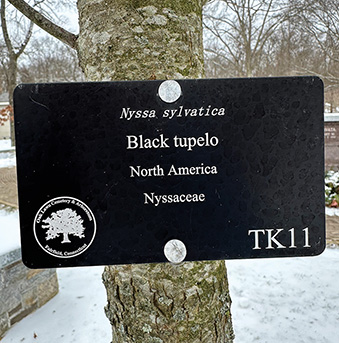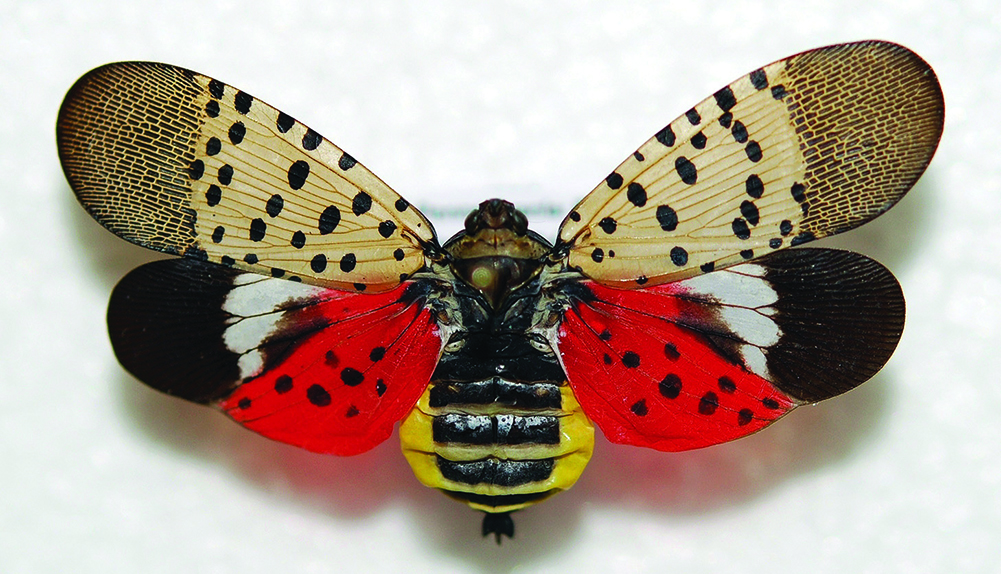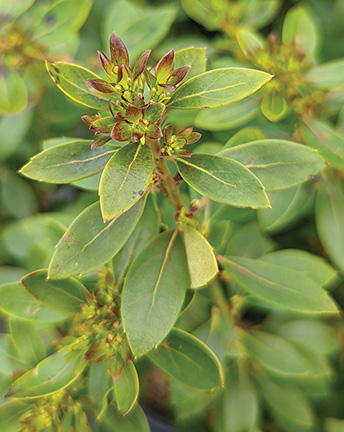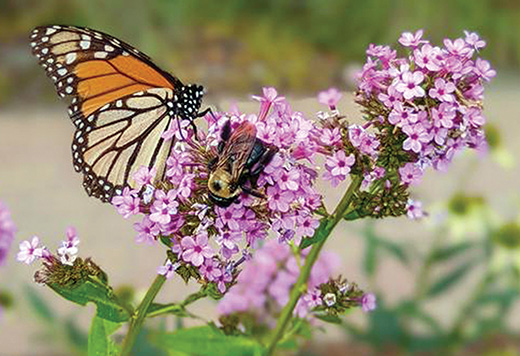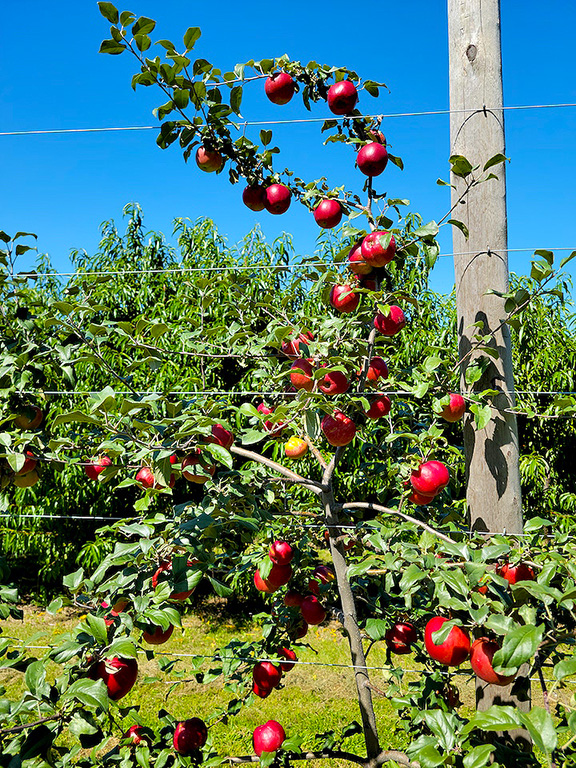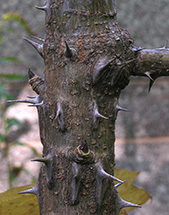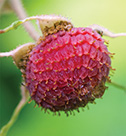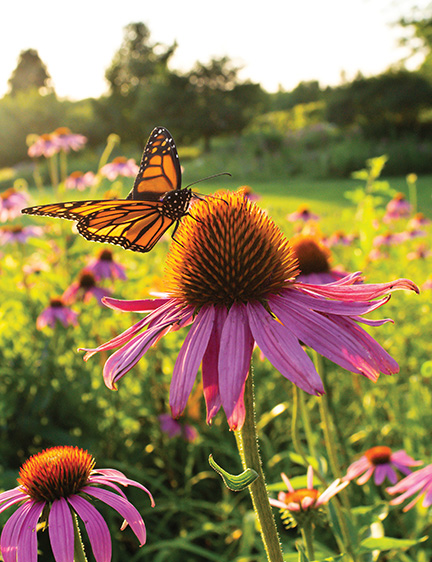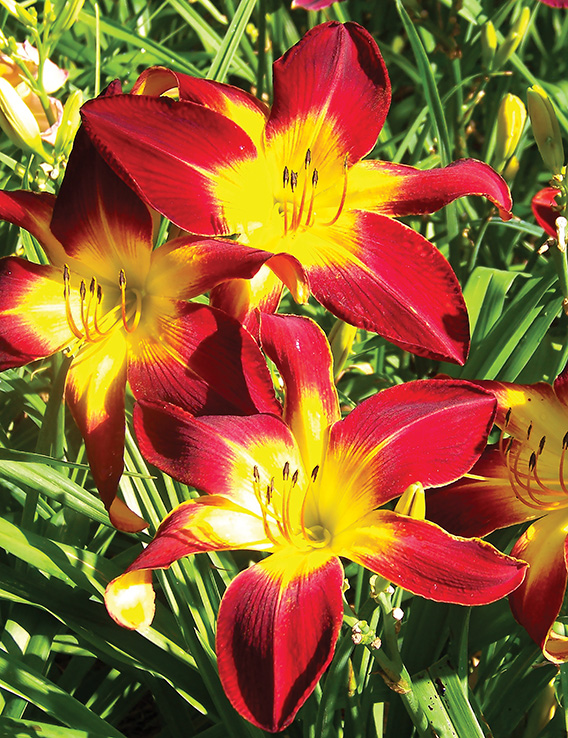By Charlie Stebbins An “Arboretum” is an outdoor “tree museum,” open to the public and offering a verdant sanctuary of quiet and beauty. With forests worldwide threatened by development, invasive pests, diseases, and plants, plus poor management practices, the need for quality “arboreta” was never so pressing. Fortunately, the expanding community of tree-loving enthusiasts grows increasingly strong! Arboreta have been around since Roman times and today they total about 4,000 globally. Botanical gardens feature herbaceous flowers and grasses, while trees and woody shrubs are the stars in an arboretum. Long ago, arboreta were simply “places of trees,” randomly arrayed in old cemeteries, universities or municipal parks. Documentation, landscape legacy, and…
-
-
Spotted Lanternfly Quarantine Renewed
The Connecticut Agricultural Experiment Station (CAES) in cooperation with USDA APHIS Plant Protection and Quarantine (PPQ) continued to detect expanding populations of the spotted lanternfly (SLF) in Connecticut through 2023. The Director of CAES hereby announces the renewal of the Order of Quarantine for SLF that was established July 1, 2021, effective January 1, 2024. More information about SLF, the quarantine order and state quarantine requirements can be found at: https://portal.ct.gov/CAES-SLF In 2020 through 2023, multiple adult SLF populations were detected in Fairfield, Hartford, Litchfield, Middlesex, New Haven, and New London Counties. The distribution of this insect continues to expand, posing a threat to the agriculture and forests of Connecticut,…
-
In Search of an Improved Inkberry
By Michael Dirr Ilex glabra, inkberry or gallberry, one of best native broadleaf evergreen shrubs, is used extensively in contemporary landscapes from Maine to Georgia and throughout the Midwest. The native range extends from Nova Scotia to Maine, south along the coast to Florida and west to Texas. According to the Florida Native Plant Society, the species grows in low flatwoods, seeps, coastal swales, bogs and sinks. I observed the species in wet areas on Cape Cod where it formed suckering colonies and in low flatwoods in the Okefenokee Swamp in South Georgia. Bonnie and I were hiking In the Okefenokee through thickets of this and Aronia arbutifolia and all…
-
Phlox paniculata ‘Jeana’
Phlox paniculata ‘Jeana’ is the Perennial Plant Association’s Perennial Plant of the Year for 2024. ‘Jeana’ was named for Jeana Prewitt who found it growing along the Harpeth River near Nashville, Tenn. Featured photo courtesy of Prides Corner Farms (pridescorner.com) “I love Phlox paniculata ‘Jeana’ and it is my go-to variety in my garden designs,” says Nancy DuBrule Clemente from Natureworks in Northford, a longtime friend of the magazine. “It does attract tons of pollinators, especially tiger swallowtail butterflies galore. If you deadhead it, it blooms and blooms. It really is superior. The panicles are longer and more pointed which makes it distinctive.” It’s resistant to Powdery Mildew and makes…
-
Support Your Local Orchard
By Russell Steven Powell This story first appeared in the Orchard Blog at newenglandapples.org Highly variable is about the best way to describe the 2023 New England apple crop.Most people by know now that the fresh apple crop will be significantly smaller due to a region-wide freeze the night of May 18. Yet many orchards have full crops, and most have some apples. When all the apples are picked, though, losses could amount to as much as half of a normal crop of between 3.5 million and 4 million 42-pound boxes. It means there will be plenty of fresh apples this fall, but the season may not last as long,…
-
Castor-Aralia: A Thorny Threat
Castor-aralia (Kalopanax septemlobus) is a deciduous tree native to Eastern Asia (China, Japan and Korea). Its common names include Tree Aralia and Prickly Castor Oil Tree. It can have thorns up to a half inch long and a trunk five feet in diameter. It may look tropical but it’s actually cold hardy to about -40ºF. It’s recently been found growing wild in several places in Connecticut. GoBotany (gobotany.nativeplanttrust.org) says it’s been spotted in Massachusetts and New Hampshire. University of New Hampshire scientists have traced the spread of this exotic tree in local forests to a single tree planted on campus in the early 1970s. According to the UNH Today website…
-
Tiny+Wild
Graham Laird Gardner’s new book, Tiny + Wild, is an excellent introduction to mini-meadows, sometimes called micro-prairies. Meadows are all the rage these days but not everyone has the space, time or money to create large meadows. The answer? Mini-meadows. I first became enamored of miniaturization when I visited the Miyawaki Forest in Cambridge, Mass., essentially a mini-forest. The concept? Plant a bunch of native plants tightly together and create a forest quickly. We can do the same thing with meadows and we can do it pretty much anywhere … hell strips, fence lines, patios, around your mailbox or stoop. You can plant them in the ground, in raised beds,…
-
A Better Look at the Brambles
Text and Photos by Dan Jaffe Wilder This story previously appeared in the newsletter of the Ecological Landscape Alliance and is reprinted with their permission. Check them out at ecolandscaping.org I remember when I first started growing food; there was a point where I was deciding whether to grow raspberries (Rubus spp.) or not. On one hand I loved the taste of raspberries, on the other hand I was worried about how raspberries grow, namely they grow like raspberries. They quickly colonize and the colony is filled with spines making management a challenge. I’ve learned quite a bit since then, and raspberries are easily one of my favorite crops that I…
-
Understanding Monarch Movement
By Dr. Kelsey E. Fisher Monarch butterflies (Danaus plexippus) are a charismatic species known for their characteristic orange and black coloration and annual migration from Mexico to Canada. Monarchs overwinter in Central Mexico huddled together in high elevation oyamel fir trees. Throughout the spring and summer months, monarchs undergo a multi-generational northern migration through the United States and into Canada. [The lovely photo of an adult monarch on a purple coneflower was taken by Jacqueline Pohl from Iowa State University.] During the summer breeding period, monarchs are widely distributed across the United States and Canada, where adult females lay eggs and caterpillars feed on their obligate host, milkweed (Asclepias spp.).…
-
Outstanding Daylilies for CT Gardens
By Russ Allen If you’ve not yet grown some of the newer varieties of daylilies in your perennial garden, they are something you’ve got to try. The explosion in daylily hybridizing over the past 20 years has resulted in over 95,000 different registered varieties, but how do you know which will perform best in Connecticut gardens? The Most Rewarding Perennial Flower Many gardeners believe that daylilies (also known as Hemerocallis) may be the most rewarding perennial flower one can grow in their garden based on a number of considerations which include: The beauty of modern daylilies can be breathtaking with tremendous variety of colors, flower sizes and forms, heights, patterns,…
